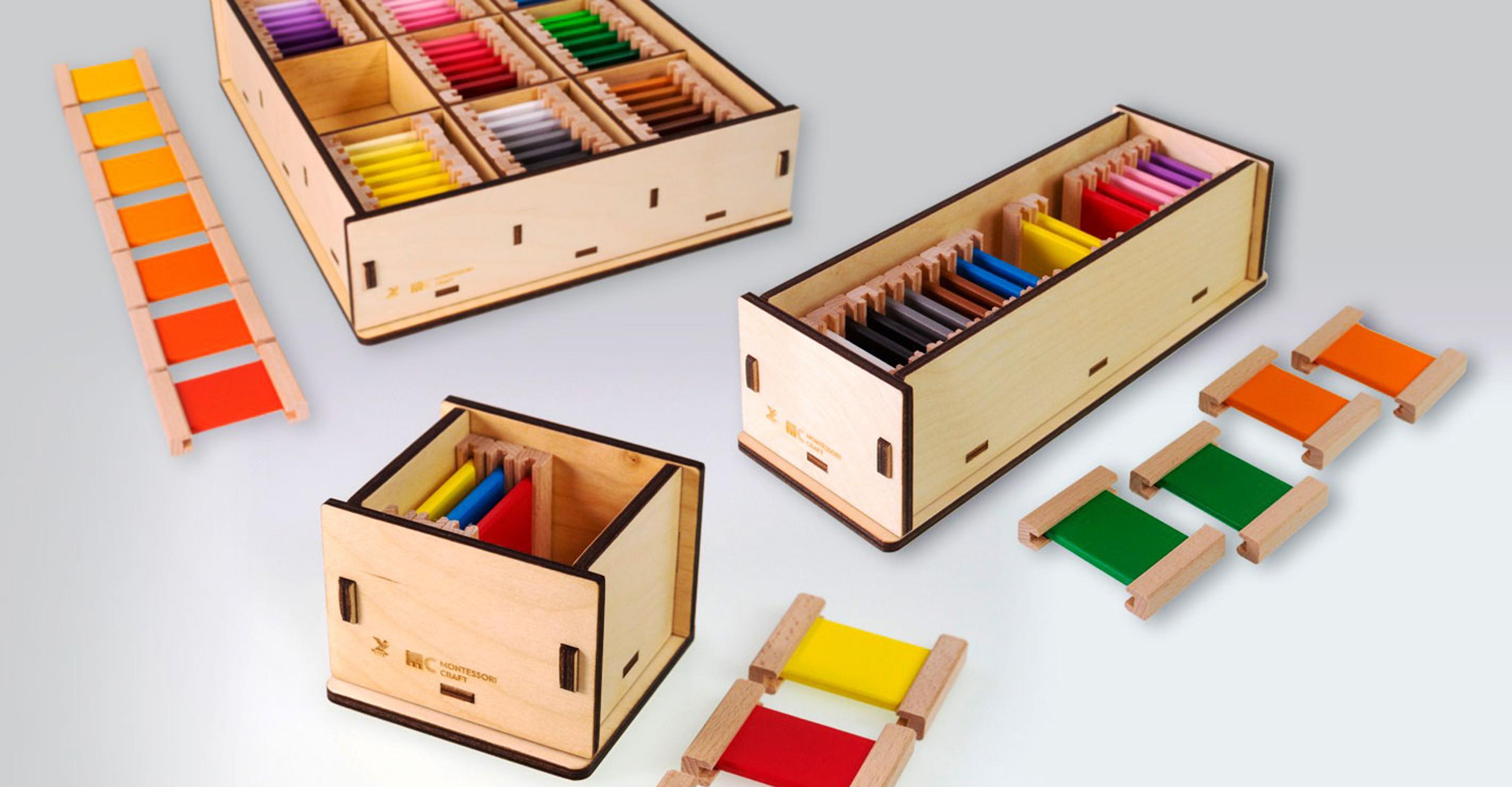The Montessori method of education emphasises hands-on learning and practical life skills. One activity that helps children develop their visual discrimination skills is using the colour tablets.
Introduction of colour tablets
The colour tablets come in three boxes, Box 1, Box 2, and Box 3, each with a specific purpose.
Description of Box 1: The Primary Colours
Box 1 contains six wooden tablets in three pairs of primary colours, red, blue, and yellow.
Purpose of Box 1
To introduce the child to the primary colours and to teach them to match the colours. The child is encouraged to touch and feel the tablets, to observe their differences and similarities, and to match the colours by placing the tablets side by side.
Benefits of Box 1
The benefits of Box 1 include the development of visual discrimination skills, the refinement of hand-eye coordination, and the enhancement of concentration. By practising with Box 1, a child learns to distinguish subtle differences in colour and texture, which helps them in later activities such as reading and writing.
Description of Box 2: The Gradients
Box 2 contains six wooden tablets in three pairs of matching gradients.
Purpose of Box 2
To teach the child to distinguish between different shades of colour. The child is encouraged to touch and feel the tablets, to observe their differences and similarities, and to match the gradients by placing the tablets side by side.

Benefits of Box 2
The benefits of Box 2 include the development of visual discrimination skills, the refinement of the ability to perceive subtle differences in colour, and the enhancement of concentration. By practising with Box 2, a child learns to identify different shades of colour, which helps them in activities such as painting, drawing, and graphic design.
Description of Box 3: The Contrast Colours
Box 3 contains six wooden tablets in three pairs of contrasting colours, such as red and green or blue and orange.
Purpose of Box 3
To teach the child to distinguish between contrasting colours. The child is encouraged to touch and feel the tablets, to observe their differences and similarities, and to match the contrasting colours by placing the tablets side by side.
Benefits of Box 3
The benefits of Box 3 include the development of visual discrimination skills, the refinement of the ability to perceive contrasting colours, and the enhancement of concentration. By practising with Box 3, a child learns to identify and appreciate the differences between contrasting colours, which helps them in activities such as fashion design, interior design, and visual arts.
Thus, the colour tablets in Montessori education are a simple yet effective tool for enhancing a child's visual discrimination skills, their ability to perceive subtle differences in colour and texture, and their concentration. These skills are essential for success in many areas of life.

